#māori television
Explore tagged Tumblr posts
Text
Filming on a television series, believed to be the first mainstream prime-time production to have 30 percent of its dialogue in te reo Māori, has just wrapped in Taranaki.
The Warner Brothers Discovery-backed drama Tangata Pai is being made in partnership with Te Atiawa iwi and Ngāti Te Whiti hapū.
It tells the story of five people whose worlds collide when a bomb is detonated at a peaceful Māori protest against a licence to mine a sacred site.
Writer-director Kiel McNaughton, who has whakapapa to Taranaki iwi and Parihaka, said the show had parallels with past struggles and contemporary issues such as seabed mining.
"In terms of Māori needing to stand up. Stand up for their rights, stand up for their land, stand up for what we believe in.
"And we are having to do that now and we were having to do that 140 years ago, so for me it's about looking at what's changed. Has anything changed?"
McNaughton, who is still on his reo journey, said it was important to normalise the use of the language.
"What's exciting about this is that it is being embraced by a broader network which has a much larger audience.
"And being able to get this 30 percent reo content, which shouldn't be intimidating for a non-Māori speaking audience, so for us to have that on Three and for Warner Brothers Discovery to support this is really exciting."
Former journalist Mereana Hond, who is from Taranaki and Ngāti Ruanui iwi, is overseeing the use of te reo and tikanga.
She said Tangata Pai would include subtitles to make it accessible to as many people as possible.
"The fact that it is 30 percent te reo Māori is what sold it to iwi that have chosen to be a part of this.
"This is a collaboration, it is a partnership, there is a memorandum of agreement between iwi and the producers to create something which tells our stories in a different way."
Theres heaps of background talent here in Ngāmotu, so that's been terrific to engage the local community and have them come and be a part of the series and the filming.
"And then we have lots of crew that we've brought from different parts of the country. The majority I would say from Auckland."
Warkia - who has Scottish and Papua New Guinea heritage - agreed with Hond that one of Tangata Pai's strengths was its illustration of how disputes could be dealt with.
"The idea of maungaarongo which is very much about creating space for people to speak even if they have very different opinions.
"Creating a space where they can specifically discuss all of those differences, and that is healthy and important and shouldn't be avoided."
Filming of Tangata Pai, which has Te Māngai Pāho and NZ On Air funding, has now moved to Auckland.
It will screen on Three and Three Now next year.
67 notes
·
View notes
Text
Ngā Tamatoa
Last night, as part of the I am Hana project, the first panel discussion of Ngā Tamatoa members took place at the TSB Showplace in New Plymouth, hosted by well known Māori TV presenter, Oriini Kaipara. The opening of the event was held mainly in te reo Māori, but morphed into mostly English with te reo Māori used on and off during the evening. It was later closed off in full te reo and…

View On WordPress
#All Blacks#Apartheid#Culture#Donna Awatere#education#Facebook#Hana Te Hemara#I am Hana project#identity#Jimi Hendrix#John Ohia#language#Larry Parr#Mr G#mural#music#Māori identity#Māori language#Māori Television#Ngā Tamatoa#Oriini Kaipara#Parliament#passion#Prof Linda Smith#Prof Ngahuia Te Awekotuku#racism#radical#reomāori#South Africa#Te Aka Māori Dictionary
0 notes
Text

Ten things to know about Hana’s haka
By Arama Rata
On Nov. 14, 22-year-old Hana-Rāwhiti Maipi-Clarke made global headlines when she performed a powerful haka, a Māori war cry, in New Zealand’s Parliament, tearing a copy of a controversial bill as part of her protest. A TikTok video of the moment, posted by Māori Television, has since been viewed over 200 million times and has garnered over 25 million likes in just three days. Online pundits have debated the effectiveness of the theatrical protest, but the bigger questions remain: Who is this young lawmaker? Why did she perform this haka? And what impact is her action likely to have on the broader movement for Māori sovereignty? Here are ten things you should know about Hana’s haka.
#Hana-Rāwhiti Maipi-Clarke#Māori#Aotearoa#sovereignty#indigenous#landback#New Zealand#protest#haka#Struggle La Lucha
107 notes
·
View notes
Text
thinking about nz gothic again. like there for sure is something there & there ample material for it but every tv sjow to ever come out of this country was comedy or dark comedy or a cop show or fuckinh. country calender. i should write one. i feel like we need actual good aotearoa cult television. there's so much potential for using this landscape & the history without making it cringe or having to lean so far into it being New Zealand like. a lot of māori folklore & myth is quite cool combined with settler stories. combined with rural decay. combined with the fact that yeah it might not be that big but you could wander off the trail & never be found just as well here as you can anywhere else. combined with recorded & pretty recent megafauna (haast eagle anyone? moa?). combined with old mines. combined with mountains & forests & plains & lakes. like there so so much here there's potential to do it well
#the only thing i can think of thats even slightly close is that margaret mahy book that got made into a tv show??#about the... taniwha? on the island?#but being fucjing. nz in the 2000s it had the worlds shittiest cgi & it was for children but like. i was 9 & i knew the special effects wer#bad. we did freaking lord of the rings !!!! we can physically do this stuff why dont we !!!!!!!!!!!!!!!!#nz gothic#aotearoa gothic#anyways
15 notes
·
View notes
Text
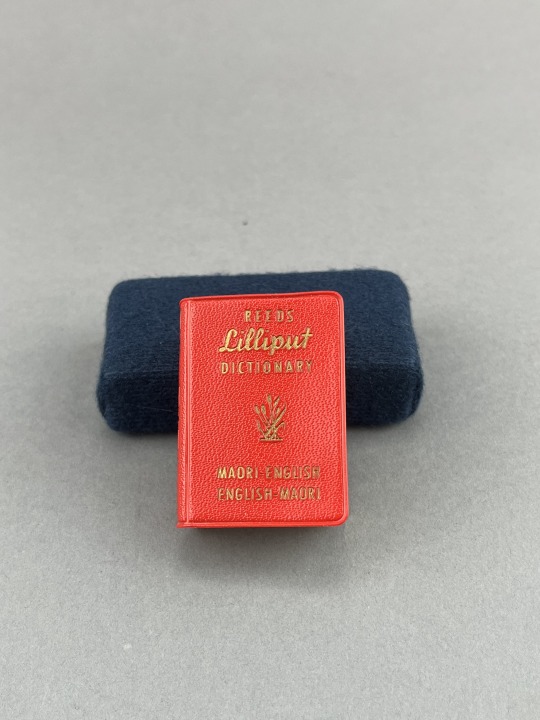
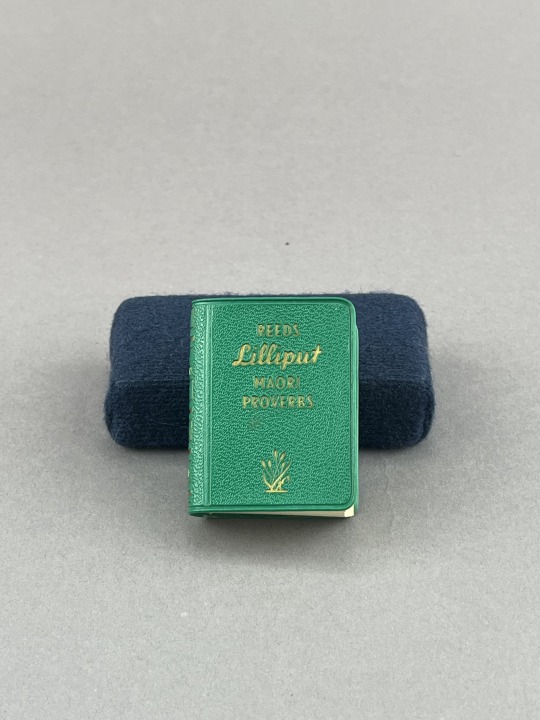

#MiniatureMonday
Happy Māori Language Week from Special Collections & Archives!
Te Wiki o te Reo Māori, Maori Language Week, is celebrated annually the week of September 14th to commemorate Te Wā Tuku Reo Māori, the Maori Language Moment, which stamps the presentation of the Maori Language Petition in New Zealand at 12 pm on September 14, 1972.
Te Reo Māori is the language of New Zealand's Indigenous Maori people. It is a part of the Austronesian language family and shares its roots with other island languages including Tahitian and Hawaiian. The celebration of Te Wiki is rooted deeply in efforts to revitalize the Māori language after years of the speaking and use of te reo was banned in schools. Today, te reo Māori is the official language of New Zealand, or Aotearoa as it is called by the Indigenous people. It has become increasingly used in New Zealand society, culture, and professional institutions. The Māori language has also become something of global interest, with the popularization of the language through its presence in music, film, television, and sports commentary.
In the United States, Polynesians as a whole make up less than half of a percent of the American population, with Māori people as one of the smallest migrant populations. Still, for those living abroad or interested in learning the language from afar, the language revitalization movement has certainly spread to the United States, along with its learning materials and resources.
There is a Māori proverb that reads ahakoa he iti he pounamu, "although it is small, it is greenstone." This refers to the importance of things small but precious, such as these miniatures!
The Reeds' Lilliput Māori dictionary and Reeds' Lilliput Māori proverbs live in Special Collections as part of the Smith Miniature Book Collection. These 5cm tall miniature books were published by A.W. Reed in the early 1960s, the dictionary in 1960 as part of a collection of miniature dictionaries made popular by other global publishers. The book of whakatauki, Māori proverbs, joined the mini-dictionary in 1964. Other language dictionaries include Spanish, French, and Romanian. Due to their size, it is likely that these books were made to entertain more so than educate. Still, they are certainly one of the many taonga, treasures, of Special Collections.
Te Wiki o te Reo Māori 2023 begins Monday, September 11, and concludes Sunday, September 17. Celebrate through songs, stories, conversations, or by learning some library-related Māori vocabulary! You can also visit the University of Iowa LibGuide on learning beginner's te reo Māori.
NGĀ KUPU WHARE PUKAPUKA LIBRARY VOCABULARY
pukapuka book
pūranga archive
whakaputunga collection
kaitiaki pukapuka librarian
wāhi tuku pukapuka reference desk
pānui to read
ako to learn
--From M Clark, Instruction GA
Reeds' proverbs (SMITH PL6465.Z77 .R44 1964) and Reeds' dictionary (SMITH PL6465.Z5 .R44 1960)
#uiowa#special collections#miniaturemonday#uiowaspecialcollections#rare books#library#maori culture#te reo maori#proverbs#new zealand
86 notes
·
View notes
Text
Māori or Less: Kitty takes charge, and demands the truth.
chapter fourteen of my ridonculous race rewrite has been posted! go check it out!
read from the beginning here
summary:
Courtney thinks competing in the Ridonculous Race as the Best Friends is a terrible idea, but Alejandro is certain that with their skills, they can win… even if his legs are still damaged, and a few former members of Team Chris are also competing. Not to mention that Courtney soon finds herself distracted by a face she never expected to see here. As wounds from the past begin to rip open, will the Best Friends be able to stay best friends?
Noah expects this show to be like any other that he and Owen have competed on in the last year, complete with his steadily increasing competitive drive. What he doesn’t expect is to make fast friends with another team, or a reunion with a strangely sincere Alejandro. More perceptive than he’s given credit for, Owen just wants his little buddy to choose happiness, which is easier said than done on reality television.
Emma will do anything to win the million—except trust her opponents, or even her allies. Competing mostly for fun, Kitty wishes her sister would let her walls down, as she’s tired of how Emma’s been treating her since her bad breakup. There’s only so much bossy behavior she can take, and if Emma doesn’t start being honest with her, Kitty’s going to take charge.
#total drama#td courtney#td alejandro#alenoah#total drama ridonculous race#td owen#td noah#td kitty#rr emma#td emma#total drama presents: the ridonculous race#tdrr#total drama fic#td fic#fic#my fic#courtnemma#amicus curiae
34 notes
·
View notes
Text
In better news, kapa haka regionals kick off this week with the Mātātua regionals, live streaming today!
I'm really looking forward to seeing Rob Ruha's new group, and of course all the old stalwarts. I really recommend tuning in now, as the full live stream recordings often aren't up for long after the event.
19 notes
·
View notes
Text
Ice Dance Falls, Fails and Flubs
Part 2

1. The Aboriginal Dance
Cultural appropriation at its finest. Seriously. How was this not banned??? VM’s Carmen gets banned but not this??
Points for not going with the standard ol’ Russian folk dance but this should never have been allowed. Aboriginal dance is an ancient tradition that dates back 60 000 years, it is a religion for the aboriginal people. There were once over 700 different tribes across Australia, each with their own unique storytelling. It is part of Aboriginal Dreamtime culture and is a way of passing down legends and stories through generations.
So, what specifically is wrong with this above, well other than ALL OF IT:
The music: this is not Aboriginal music, idk what it is but it is not utilising traditional instruments, the “singing” is not culturally accurate.
The costumes: this is just so offensive and inappropriate. Yes, aboriginal culture and dances use face paint (oca to be exact) but not like this. They do not where leaves all over themselves, nor do they wear strings. At one point in the season, he was dressed in a darker unitard and black face- AT LEAST that was banned.
The choreography: this is just not the kind of dancing that can be done on ice. Flamenco, yes, waltzs, yes, country dance, sure. Not this. This Russian team makes it out as though Aboriginals are Neanderthals. They are not. Their dances are are pieces of art and communicate 10s of thousands of years of history. The nose rubbing is not aboriginal but more a Māori (new zealand/ pacific islands) custom.
How this wasn’t deducted all the component scores I have no idea, it’s a disgrace this won an Olympic medal

2. Yuri Balkov: Human Turd 💩
Partly responsible for the shit show that was 1998 ice dance. Banned for a year then back on the panel several times again, and was up to his same shit once again here in 2002. Spineless turd with no respect for the sport he is.

3. Nailed the Ending
This is much better with volume (timestamp 1:11:00 on the Beijing FD video).
Point 1. The lil ‘sexy time’ moment 😖
Point 2. Why is it necessary to put a move like this right at the end when you have just done a lift?
Point 3. Who came up with this? Of course he was gonna dropped her! She has no point of contact on him so how is she suppose to get upright again when she does not have Tessa Virtue’s core of steel??
Point 4. Obviously on the first watch you notice the drop first, but just before that you get an elbow to the face- lovely.
Point 5. The perfectly timed crash drop on the music. Art. I hope she was ok, this is a horrible thing to happen, but the musically comedy of it is just gold.
Also this was a very bad fd.. so boring, bad music.. this ending kinda came par for the course.

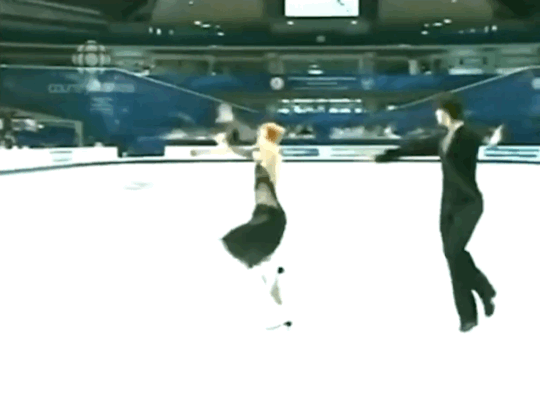
4. Weapo’s Twizzles
Bobble bobble bobble bobble fall over bobble bobble

5. FP/M Salt Lake City Edition
Splat.
Come on man! How hard is it to stay up right? (ice skating is very hard but these are Olympic level athletes… supposedly).
It truly does not surprise me it was considered taking this “sport” out of the Olympics. Thank god they didn’t and two precious bby angels came among to rescue it.
Oh yeah btw.. this won a medal 🫣😵💫🥴
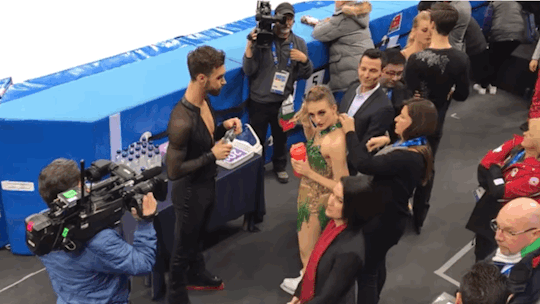
6. 22 year old high level athlete doesn’t take responsibility for her own costume; chaos ensues.
I was always taught from starting dance at 3 years old- your costume is your responsibility. If it doesn’t feel right, you get the safety pin or needle and thread and you fix it, or you at least make sure someone else does it up for you PROPERLY, obviously no one wants this to happen to them esp not on global television but it was solely her responsibility to fix it (things are different in shows/companies where you have costumers , but you individually- your own costume you are responsible for). To continue complaining about this for the next 4 years is a childish joke and even if the hideous green dress had stayed together you still shouldn’t have won 😘
7. ISU after 1998: “We’re gonna fix ice dance judging”. ISU in 2002: “Psych”.
I hate this and love this an equal amount.
The synchronicity of Rod and Tracey: “They’ve been beaten, by the Israelis”. (Pls don’t take that out of context rn). Tracey was just 100% DONE with all of this.
From Margarita and Povilas in their crowns, her throwing hers off and storming out. Jeff Buttle shouting ‘WHAT THE FUCK??’ Iconic.
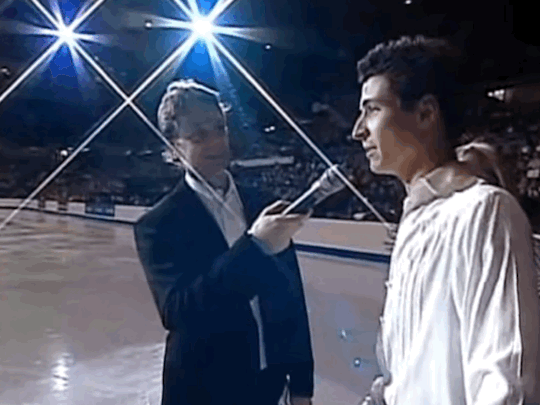
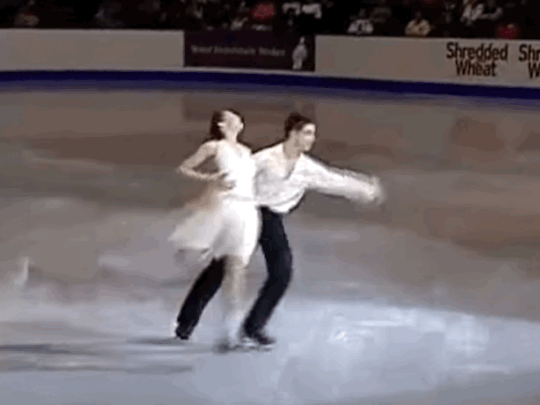
8. Scooter’s Nose Bleed
Poor bby. Iconic way to finish off your first National Championships win. Then they make you go out and do an encore 🤦♀️. I love in the first gif how Shay pops into the shot 😂
Also ironic thinking about a certain team at 2017 worlds getting blood on each other and their reaction… do you think T even blinked twice at getting S’s nose blood on her?? I don’t think so..
9 notes
·
View notes
Text
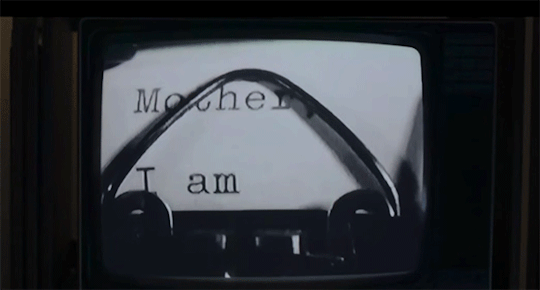
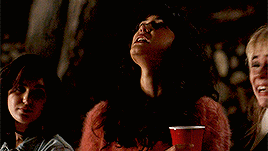
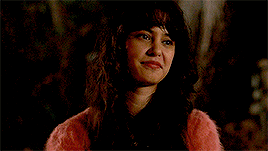

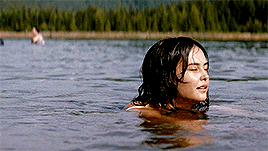
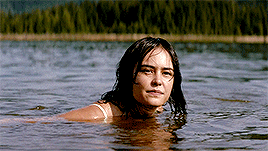

i. unknown movie, "doing the right thing" - daughter ( mv ) // ii. "come wander with me" - bonnie beecher, the twilight zone, dir. rod serling // iii. "shine on you crazy diamond (i-v)" - pink floyd
( gdocs version since we hate tumblr for its many crimes now )
quick stats !
full name: amy florence arano
date of birth: january 13th, 1967
zodiac big three: capricorn sun, leo moon, leo rising (?)
gender & pronouns: cis woman & she/her
sexual orientation: bisexual
ethnicity: chinese, māori cook islander, white
nationality: us american
religion: agnostic
languages spoken: english (5), mandarin (3), rarotongan (2)
enneagram: 4w5
mbti: esfj
temperament: sanguine-melancholic
alignment: true neutral (?)
backstory !
there is a tl;dr at the bottom!
triggers: she was a child actress, so... in the words of amy winehouse, what kind of fuckery is this?
It was almost the perfect day when Mr. and Mrs. Arano welcome their first child to the world. The sun was as warm as always, but cool breeze swept through the desert air. Surrounded by the angels that Los Angeles boasted, it was almost perfect. Almost.
But there was a negative talisman hanging above them, one that neither fully registered. See, they were sent home with a rabbit's foot and an invisible question mark over their heads...
It was Friday the 13th. Bad luck was written in the stars for Amy Arano.
It started with low funds. Constantly on the brink of poverty, constantly taking out loans, the move to the USA was coming to bite the Arano family in full. But being broke was nothing groundbreaking, nothing millions of families didn't already live through. And they had only one child to provide for. They could make it.
Until Mrs. Arano found herself pregnant in 1969. Abortion still illegal uh, should I be using the word 'still' given the overturn? and with little to no connections to backroom clinics, she carried to term. Gave birth. Twins.
More on the brink of financial ruin than ever with no backup plans, the Arano family was desperate. But they were marketable.
Chance had it that XZY had come up with a television show to battle The Brady Bunch -- it was called The Carey Crew. They had a few names attached, but were still searching for the final piece: the daughters.
Twins were marketable as child actors. Despite theirs only being two at the time, desperate times called for desperate measures. And the execs took to them... but they were looking for someone a little older -- you know, older than two. Which, with her haunting the background as her siblings were pimped out and still stealing the show, they found in Amy.
1972 was a whirlwind. Amy was to play one of the middle children of the Carey Crew, one of their adoptees -- because this show was, like, really edgy. The Careys had three biological children and three adopted children... like, literally the edgiest thing on all of cable.
Soon, before she was Amy, she was Sandy. And, as the story goes, the amount of money she, a child, took in from her role began to corrupt the Aranos. The twins grew up with little to no work ethic, her father was busy buying all the best watches, her mother was ensuring she was looking perfect for the next episode. It was hard to remember how they began, and not just because she'd been so very young.
Now, the positive aspect of being a child star in the 1970s? Tabloids weren't hitting it big yet, you weren't an idol yet, and, in due time, you were far less likely to be stalked and harassed by paparazzi and poor excuses for 'journalists.'
But the negative aspect of being a child star in the 1970s? Quite frankly, you were still a child star. All of the milestones you got to experience were scripted -- say, a first kiss -- and all of the milestones you missed were bastardized by the script -- say, your first prom. In addition, they were still missing the laws regarding the hours you worked... the safeguarding wasn't as safe as it would be in due time...
Off set, you were better off. On set, you were screwed.
But you -- but she -- spent most of her time on set. Early hours and late nights, provided uppers and downers to help survive the day.
The Carey Crew lasted for ten years, beating its rival show... you know, the one it pretty much plagiarized. From the series itself to movie specials to spin-offs about the kids, it made a splash. And the splash it made wasn't because it was good. For the most part, it lasted so long because all of the hatred and mockery brought in new viewers. So bad, it's good.
When the series -- and all of its spin-offs and movies -- finally wrapped in 1982 with the most nonsensical ending (it was Mick Carey's dream all along...), Amy was 50, 15, and 5 all at once. But the 5y/o and the 15y/o knew that it was the 50y/o's job to keep money on the table.
Very few offers came her way, what given The Carey Crew's status as a successful failure -- more commercials and guest appearances (with the inevitable 'oooooh!' from the live audience) than anything else. So a valiant attempt was made to further her fame into the music aspect of the entertainment world... which worked for one (1) song.
Think "I'm Lindana and I Wanna Have Fun!" and/or "Let's Go To The Mall" for reference... It became elevator music pretty quickly.
Despite her attempts and failures, she was still pushed and pushed and pushed to the edge. You know what? Maybe the 50y/o doesn't want to provide for the family anymore. Maybe the 5y/o and 15y/o want to go try something... different! and fun!
She had an uncle in Cherry -- a little Nowhere, USA. Arrangements were made between the two (oh, how he hated what his brother had become) and she left Los Angeles in the summer of 1985, but not before her mother could ask if she really wanted to leave her family in squalor.
It was, and remains... a culture shock. On the bright side, there are far less responsibilities -- there's far less pressure. On the other side... they don't serve champagne at these college parties?
She had never actually cared for acting. She had never actually cared for music. But the entertainment industry didn't take as kindly to writers, and they certainly didn't take as kindly to artists. But she wasn't in the industry anymore, right? Right! So, fuck it, we ball! Art History!
How do you do, fellow plebeians?
tl;dr !
born on Friday the 13th :\ (legit btw! Jan 13th, 1967, was on a Friday!) family poor :\ but it's ok because they love each other! family has twins :\ they gotta find more money now. some folks are looking for twin casting, omg! let's go! but omg! they're more interested in amy bc the twins are like. too young. ok! amy joins the show the carey crew, aka the brady bunch but worse. so much fuckery bc child actors are fucked :\ family doesn't love each other very much anymore! show ends after 10yrs and she's like "i am getting no offers bc that show was awful idk what to do" so. uh. one hit wonder. she's lindana and she wants to have fun. is eventually DONE WITH IT. makes arrangements to move to cherry with her uncle with HER MONEY!! mom tries to guilt-trip her and like it works but it also doesn't!! has been in cherry for roughly a year?? anyway. cherry is a culture shock... how do you do, fellow plebs?
headcanons !
call her sandy! call her sandy! call her sandy!
i actually have a few more rn but with tumblr being weird (it's a weirdo it doesn't fit in) i'm just gonna. use google docs for the rest.
2 notes
·
View notes
Text
This is a small thing in the greater scheme but I’m watching the 6 o’clock news* on TV3 (one of the two main evening news programmes on New Zealand TV) and both the anchors are Māori (Mike McRoberts and Oriini Kaipara) and the anchorwoman has a moko kauae tattoo on her chin. I am just thinking about the change there’s been in my lifetime in terms of Māori representation in the front ranks of television, in authoritative roles. There’s a lot of progress still to be made in terms of inclusion and respect for Māori people and their culture but that’s really neat.
*which I don’t usually do, I read the news online (primarily through credible newspaper/magazine websites), hence me noticing this tonight
2 notes
·
View notes
Note
Hi! You've mentioned a few times that Harry mocked the haka years ago. Do you have any links to that, or could you summarise what you're referring to? Thanks. Also, how and why do you think Wellington was clearly pivotal in 1D's lives?
I'll answer the second question first - and then go into the first. Basically whatever happened in that mediocre bar opposite a parking lot in the early morning of the 23rd of April - the video about it certainly had an impact on their careers - it was the first massive peak in interest about 'Larry' (check out google trends). Both public and fans being aware of the idea of Larry Stylinson had a huge impact on Harry and Louis' life.
One Direction visited New Zealand twice once in 2012 and once in 2013. Both times they only interacted with Māori culture on Pākehā (white New Zealanders terms). On both occasions they were asked both in interviews and in twitter questions to imitate Māori culture. They didn’t know the basics of Māori culture or language and they individually and collectively imitated Māori culture badly for Pākehā entertainment. This is racist, colonising behaviour, which reinforces Māori oppression.
During twitter questions they were often asked to do the Haka. They all attempted it in response to a twitter question in Auckland in 2012 (but not Wellington, because that was a magic perfect night). In Christchurch in 2013, they did it during twitter questions, but not in response to a twitter question - it appears to be because they wanted to. (Harry says that he wants to learn the Haka - but not enough to actually do the learning before performing publicly - and Niall is so enthusiastic that he does it by himself first before the whole arena does it with them). And in their show Auckland they again did it in response to a twitter question. (Niall also did it on a radio interview in response to a question, but that video is no longer on line).
This is a mocking way of engaging in Māori culture and the more you watch the specific examples the more you see how bad it is - they make up gibberish words, as soon as they get past the two lines they remember from TV. They treated Māori culture as something to make fun of - and chose only to engage with Māori culture on Pākehā terms.
For those who struggle to understand why this was mocking - helpfully Ant and Dec put together that demonstrates it quite nicely. In 2013, 1D were interviewed for a pretend New Zealand television show for Ant and Dec's prank show and were asked to pronounce Māori words (something that also happened in New Zealand interviews, although I can't find any of them online any more). It neatly illustrates the underlying racist dynamic.
Now one point to make about all this is that this is a Pākehā New Zealand problem at its root. And obviously I could talk about the ways that Pākehā New Zealanders engage with Māori culture quite a bit. But you don't have to participate in every bit or racism that other people ask you too.
And to sort of set-up what I want to say about Harry - what's really noticeably different this time is that alongside the political action of waving a Tino Rangatiratanga flag - Harry engaged with Māori culture on Māori terms. And that treating Māori culture not as a play thing for Pākehā, but belonging to people who he can meet and talk with - was an important precursor to taking political action.
#I have thought a lot#about the fact that this racism is never ever talked about in the fandom#even though some of the videos are reasonably well known
5 notes
·
View notes
Text
Now that our first official Matariki (Māori New Year) is over here in Aotearoa New Zealand, I have a few comments I feel as though I need to express.
Growing up, I remember watching televised screenings on the news of the Lunar New Year/Chinese New Year. And while the adult in me now understands and appreciates how valuable these celebrations are, and how it is important that our Chinese whānau (family) are allowed to embrace their culture so far from home, the child I once was always carried a small seed of bitterness over it.
At the time, I didn't know that Matariki was a very integral part of our tipuna's (ancestors) culture, but as a Māori child attending a predominantly Pākehā (white) school, what I did know was that my culture, my identity, was somehow "lesser than".
Never had I ever seen te ao Māori (the Māori worldview) be presented or perceived in a positive light. Sure, Pākehā institutions enjoyed commercialising our culture (e.g.: the All Blacks and the haka), but largely speaking, society perceived us as incompetent, lazy beneficiaries whom are violent towards our most vulnerable.
In reality, this is simply not true. Māori communities, like all communities, are not a monolith. It is unjust and inaccurate for non-Māori to accuse us of such. Just as all groups of people are, Māori are nuanced and multi-layered. Our flaws are prominent, yes, but so are our strengths.
It took me a long, long time to decolonise my own perception of my own identity and my own culture. Once I found myself on the other side of that journey, it was truly healing.
I credit Matariki as one of the major reasons for this healing.
As an official public holiday, I am filled with hope that all tamariki (children), both Māori and non-Māori, are able to walk into a tomorrow where true co-governance seems closer than ever. Māori aren't trying to erase Pākehā. We aren't trying to indoctrinate your children. That has never been our aim. We simply want acknowledgment, recognition, and respect. And the chance to reclaim our lost cultural identities.
That's all.
6 notes
·
View notes
Text
ORIINI KAIPARA // BROADCASTER
“She is a New Zealand broadcaster, journalist and translator and interpreter of Māori and English. Kaipara has worked for Mai FM, TVNZ 1, Māori Television, and Three. In 2019 Kaipara was the first person with a moko kauae facial tattoo to present mainstream television news. In 2021 she became the first such person to host a prime-time news programme on national television.”


0 notes
Text
I suggest this for any New Zealanders who have curiosity and want to to help understand how New Zealand got where it is today.
First some older articles
GHOULISH GRANDSTANDING AMID GENUINE GRIEF
THIS INVESTIGATION EXPLORES THE MACHINATIONS OF WHAT MIGHT LIE BENEATH THE CHRISTCHURCH AND KAIKŌURA EARTHQUAKES.
A detectable ghoulish signalling of a group game was encoded into the hosting of the 13th anniversary for the 2011 Christchurch Earthquake, on 22 February 2024 at the Canterbury Earthquake National Memorial.
Former Māori Television news and current affairs editor, Steve Snoopman, shows how and why the prime number 13 is embedded in ‘news worthy’ events by ruling élites to procure political marriages, to display unity, encode caution and to signal who to scapegoat to de-escalate scandals — lest they snowball into crises. The meta-data reveals an élite state-corporate criminal group operated a cartel to exploit the Christchurch Earthquake Rebuild, as well as the Kaikōura Earthquake Recovery.
0 notes
Text








Tungia Baker as Hira, The Piano by Jane Campion, 1993.
Tungia Dorothea Gloria Baker (8 October 1939 – 25 July 2005) was a New Zealand actor, weaver, and administrator. Her notable acting roles included Ngahuia in the 1980s television drama Open House and Hira in the 1993 film The Piano. Baker was influential in contemporary Māori theatre, Māori film making and Māori arts. She named the Taki Rua Theatre, and was a founding member of Māori artists' collectives Te Manu Aute and Haeata. Via Wikipedia
0 notes
Text
yeah! John is canonically Māori. I believe Tamsyn Muir has talked about it outside the books, but for sources within the text [Nona the Ninth spoilers warning]: we know from Nona's flashback chapters that pre-apocolypse John is a guy from New Zealand/Aotearoa. He uses several te reo language phrases throughout the books (although of course that's not standalone evidence of his ancestry since those could be things he learned living in community with te reo speakers). His physical descriptions include having brown skin ("The cool white lights...cast the warm browns of his hands and face into an everyday ochre"), as well as "nondescript dark brown" hair, a "long jaw, high forehead", a "long, square, urbane face". Most directly, during the John chapters of Nona, he says that in response to his eye color change, "P— said I looked like a Māori TV Pink Panther" (referencing the cartoon character Pink Panther who has yellow eyes, and Maōri Television, now called by its te reo name Whakaata Māori, a channel that broadcasts programs that aim to revitalize and promote Māori language and culture)
I'm probably missing a few other descriptions/references but that's a fair gist. I feel like there are other things that indicate his culture like maybe when talking about his family but I can’t remember anything specific enough to go find a quote, my apologies for not quite yet encyclopedic knowledge of the books lol
also slightly related reading I wanna throw on here is this tamsyn tumblr post from 2019 about the GtN characters' appearances. she pulls together their main canonical descriptions as well as adding more about how she envisions them and it's a super interesting read to me. about Gideon she says, “Gideon is true butch … She should have a strong-jawed, boyishly pretty face with a big douchebag grin. … I envision her as mixed Mãori, darker-skinned than Harrow.”
Muir is definitely overall coming from a Kiwi perspective as a writer,
"(I am a Kiwi: I write Kiwis In Space as a default)" -Tamsyn Muir 2019.
real. I've always listened to the audiobooks but I wanna go reread the whole series with a Kiwi accent. here is the whole post: https://tazmuir.tumblr.com/post/187901634998/hello-i-loved-gideon-the-ninth-so-much-and
I love you all, you’ve done nothing wrong. But I’m begging you. The “kiri” in Kiriona is not pronounced like Siri on your phone. Kiriona is legit just how someone speaking te reo Māori would pronounce “Gideon”. You roll the R a little bit and it should sound a lot more like “Kee-dee-oh-nah” sorry idk how to properly write out phonetics but you get it
#spent a half hour pulling quotes for this instead of making lunch#I see a months-old request for information that went without direct response and I have the information due to my tlt brainrot. I drop#everything to respond#please excuse me#tlt series#tlt spoilers
7K notes
·
View notes